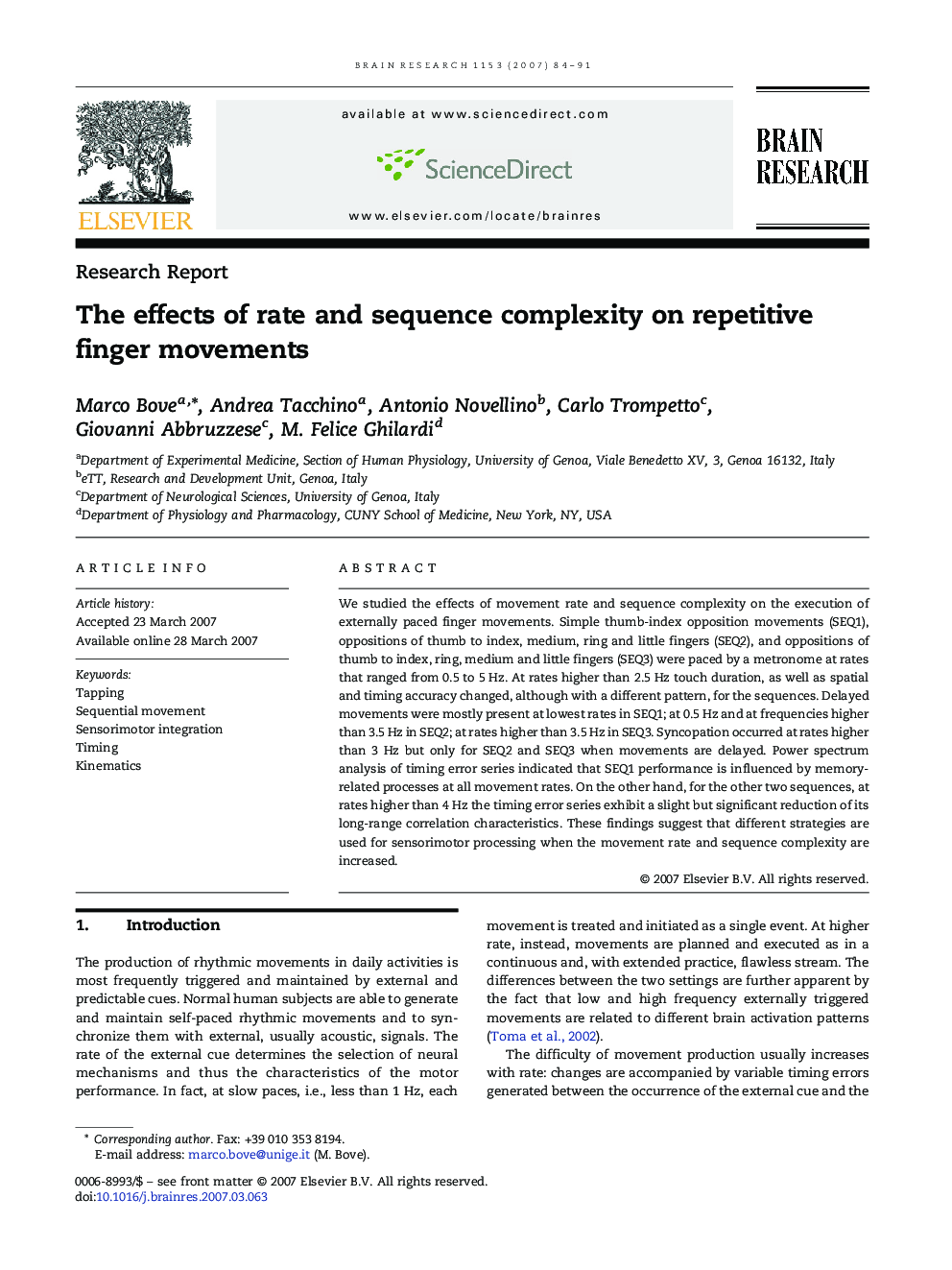| Article ID | Journal | Published Year | Pages | File Type |
|---|---|---|---|---|
| 4331081 | Brain Research | 2007 | 8 Pages |
We studied the effects of movement rate and sequence complexity on the execution of externally paced finger movements. Simple thumb-index opposition movements (SEQ1), oppositions of thumb to index, medium, ring and little fingers (SEQ2), and oppositions of thumb to index, ring, medium and little fingers (SEQ3) were paced by a metronome at rates that ranged from 0.5 to 5 Hz. At rates higher than 2.5 Hz touch duration, as well as spatial and timing accuracy changed, although with a different pattern, for the sequences. Delayed movements were mostly present at lowest rates in SEQ1; at 0.5 Hz and at frequencies higher than 3.5 Hz in SEQ2; at rates higher than 3.5 Hz in SEQ3. Syncopation occurred at rates higher than 3 Hz but only for SEQ2 and SEQ3 when movements are delayed. Power spectrum analysis of timing error series indicated that SEQ1 performance is influenced by memory-related processes at all movement rates. On the other hand, for the other two sequences, at rates higher than 4 Hz the timing error series exhibit a slight but significant reduction of its long-range correlation characteristics. These findings suggest that different strategies are used for sensorimotor processing when the movement rate and sequence complexity are increased.
